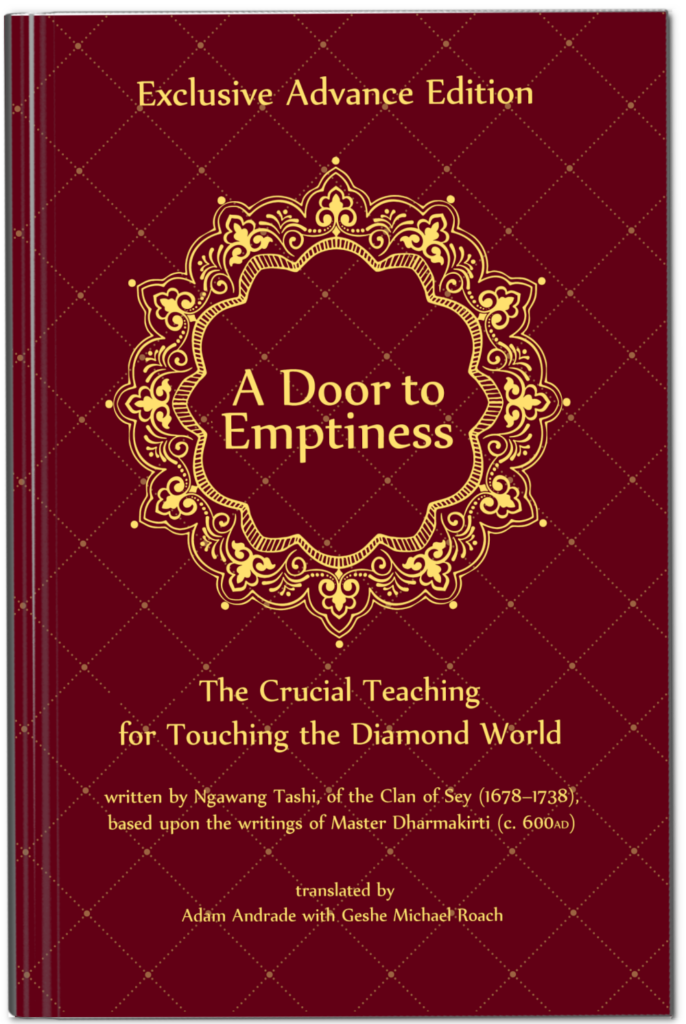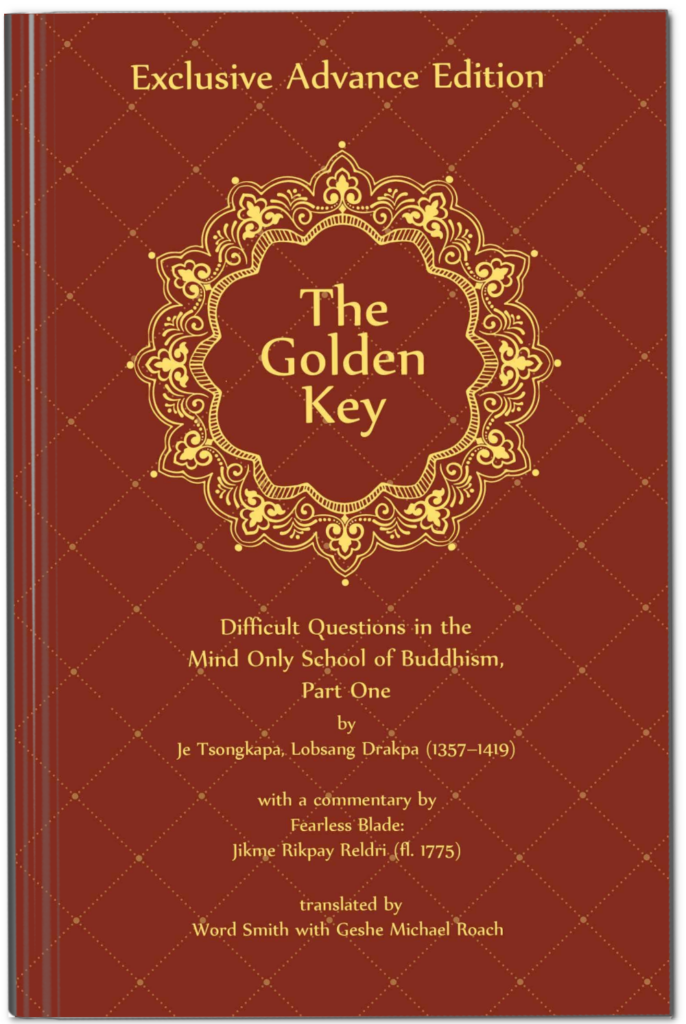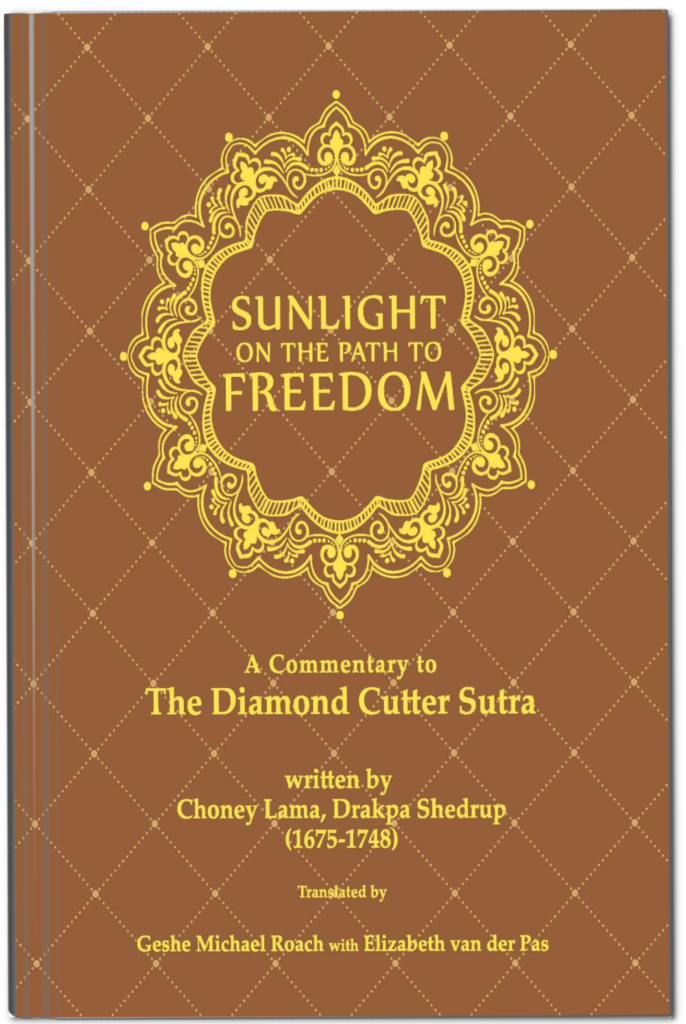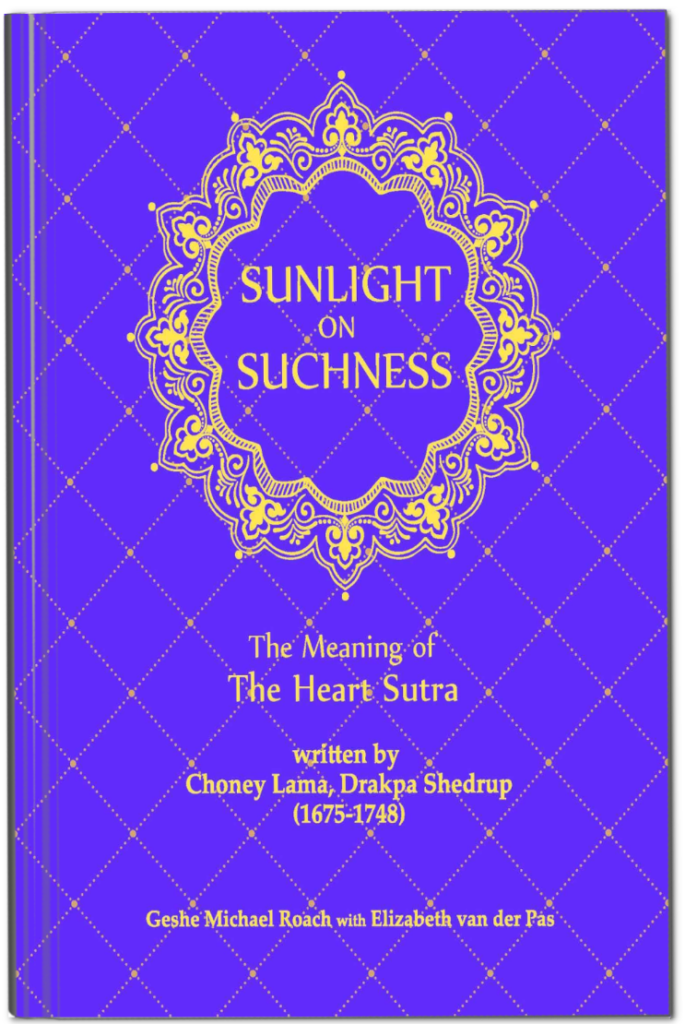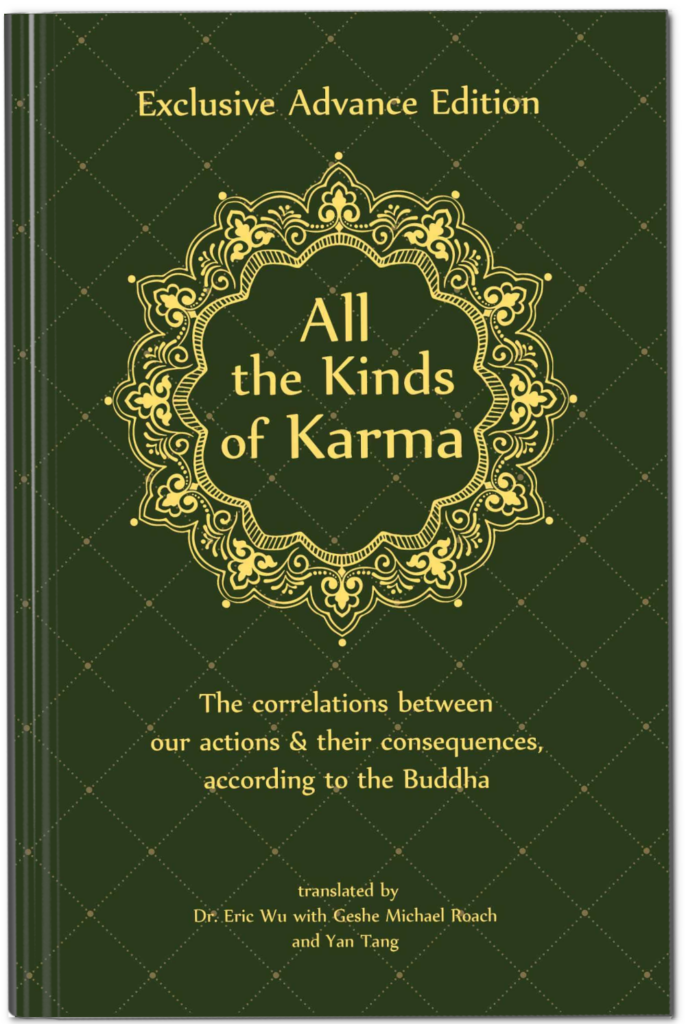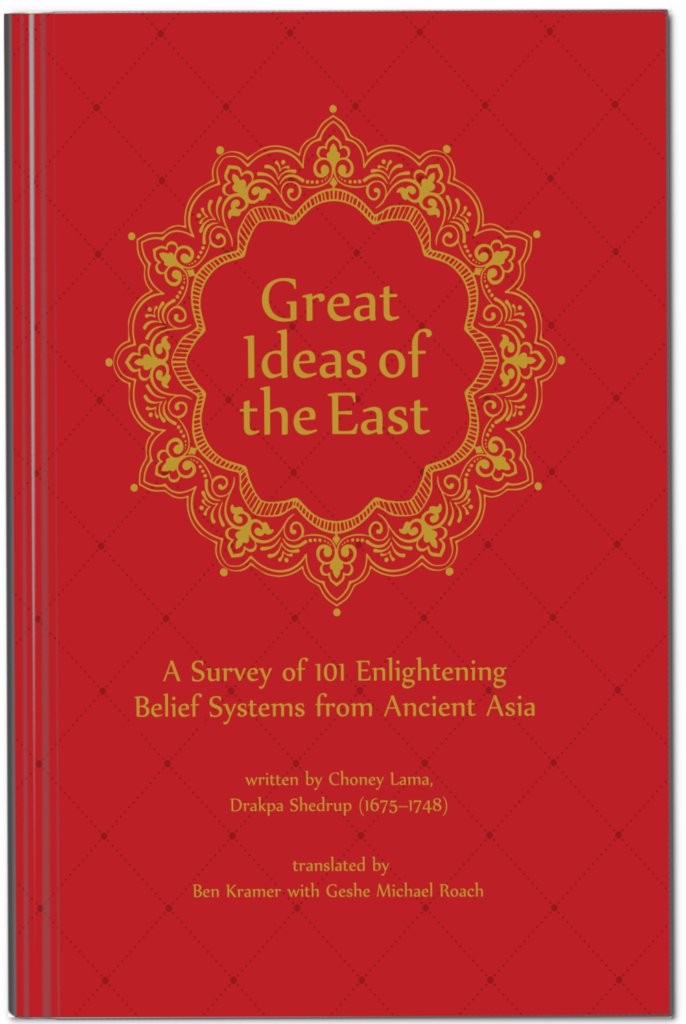Vowed Morality
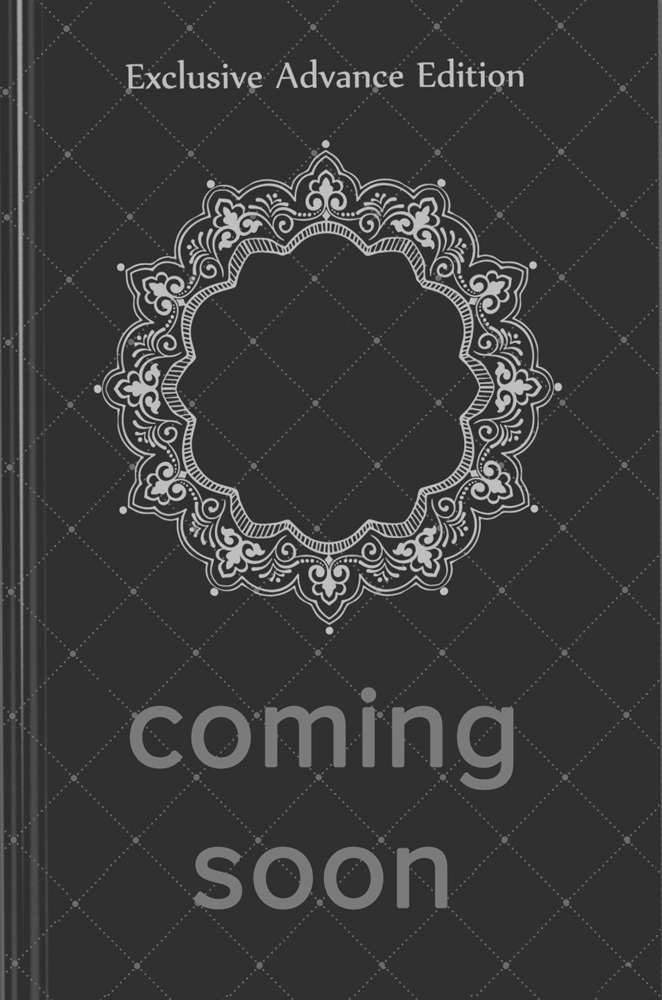
A String of Precious Jewels A Classical Summary of Buddhist Ethics
The subject of Vowed Morality, or Vinaya as it is known in Sanskrit, is one of the five foundational subjects of training for students of Buddhist philosophical systems. The study of vowed morality is largely focused on Freedom Vows, meaning commitments that people may make to refrain from harming others and leading an ethical life in their pursuit freeing their minds from the cycle of pain. There are different sets of these vows, some designed for lay people and some for the ordained. This book grants us a very detailed explanation of those different sets of vows, as well as an understanding of how the vows can be broken, how they can be restored, and some advices for how to keep these kinds of commitments.

A Gemstone of the True Intent
Higher Knowledge

The Sun of the True Thought A Commentary to the “Treasure House of Higher Knowledge”
The Treasure House of Higher Knowledge, or the Abhidharmakosha, as it is known in Sanskrit, is one of the foundational great books of Buddhist philosophy. It was written by Master Vasubhandu (c. 350 AD) and contains a compilation of much of the philosophical and cosmological ideas that were present in the Buddhist communities in the centuries following the Buddha’s passing. It presents ideas that range from the formation of the universe and our world to the ideas of actions and their consequences, and how the mind functions to perceive reality. This work constitutes main text of the Detailist school—the first and “lowest” of the classical four schools of ancient India—and as such provides a foundation upon which all of the classical schools of ancient India rely.
This detailed commentary unlocks the meaning contained within the otherwise cryptic verses of the Abhidharmakosha, illuminating these crucial ideas for the world to understand and use. This book is vital to gaining a higher understanding of how reality works, as well as being sprinkled with many useful tools that we can apply to our lives immediately.

The Compendium of Higher Knowledge
Logic and Perception
A Door to Emptiness The Crucial Teaching for Touching the Diamond World
The promise of these ancient books, for more than two thousand years, is that there exists—in tandem with the world we know—an invisible higher world, going on around us all the time. We can call it the “Diamond World,” but a simpler (and easily misunderstood) name is simply “Emptiness.”
The idea is that—if we can make contact with this higher world, if we can touch it directly—then that touching sets into motion unstoppable wonderful changes in our being. The touching sets off a transformation in the flesh of our very body itself, sort of a wonderful cancer, which inexorably spreads through our entire being and changes it into living diamond: eternal and infinite beauty and wisdom. We could call it paradise—a paradise available to every living being in the entire universe, where we live together into all future time, in perfect harmony and happiness.

Destroying the Darkness A Jewel Ornament of the Seven Volumes on Accurate Perception as Presented by the Indian Master, Dharmakirti
A clear and thorough commentary on perceptual theory and logic.

Jewel of The True Thought of the Commentary on Accurate Perception A Commentary on Master Dharmakirti’s “Commentary on Accurate Perception”
A detailed explanation of logic and philosophy as originally presented by Master Dharmakirti.

Fulfilling the Hopes of the Fortunate A Primer on the Topics of Buddhist Logic as Presented by the Indian Master, Dharmakirti
This detailed book on logical thinking is derived from Master Dharmakirti’s Commentary on Valid Perception. It is a common book used to train young monks in the art of debate and is sometimes known as the door to emptiness. In our translation program this book represents the logic school.
Mind Only
The Golden Key A Commentary to Difficult Questions in the Mind-Only School of Buddhism
"The Golden Key" is a wondrous exploration of some of the deepest ideas in Buddhist philosophy. It is truly a key for unlocking some of the deepest wisdom ever espoused in world history! Jigme Rikpay Reltri's commentary to Je Tsongkapa's classic work on the Mind only school is both easy to read and deep in its import. The annotations Jigme Rikpay Reltri provides makes this very difficult subject clearer. One of the most difficult philosophical subjects in the world is finally accessible in the English language.
Our author takes a poem written over six hundred years ago and makes the finer points clear for today's audience. The original poem is in effect a summary of over four thousand pages of difficult philosophy from ancient India. Without a good commentary, reading this sort of text can be daunting at best. It is exciting to consider how much this book can change how the world thinks! This might be the most comprehensive book translated on the Mind Only school into English today.

Difficult Questions In the Mind-Only School Of Buddhism
Je Tsongkapa's "Difficult Questions in the Mind Only School" is an auto commentary to one of his earlier works. It helps to clarify many of the finer points discussed in his original poem. He gives an in depth description of the two additional consciousnesses of the Mind Only school. His work is founded upon and backed by the great works of the Mind only scholars of India including Masters Asanga and Vasubandhu and of course Buddha Shakyamuni. The contents of this text codifies the works of 1900 years before it in one place.
It is hard to imagine this much knowledge packed into one book. Je Tsongkapa's amazing intellect and unsurpassed knowledge of Buddhist literature allowed him to write a text that no one else could. Due to the vast knowledge required to write this book, it also takes a great deal of ability to translate as well. Thankfully the text has been translated by scholar's directly in Je Tsongkapa's lineage allowing them to make clear the most esoteric points in the text some six hundred years later. This text along with its companion, The Golden Key, is intended to do nothing less than change how the world thinks.
Perfection of Wisdom

Stopping the Circle of Sadness

Master Vasubhandu’s Wheel of Life
An Explanation of the First Principal and the Divisions of the Dependence by Master Vasubandhu (350AD). A detailed explanation of the 12 links of dependence, and how we can become free from pain.

A Dialectic Analysis of the Perfection of Wisdom
A very detailed textbook for the study of the lower branch of the Middle-Way school of philosophy.
Middle Way

Nothing Is the Way It Seems The Sixty Verses on Reasoning
The Sixty Verses on Reasoning by Arya Nagarjuna are considered by scholars to be one of Master Nagarjuna’s Six Great Works on Logic, and as such, consists of philosophical arguments designed to prove to the so called “lower” schools of Buddhism that although they don’t realize it, they already accept the profound explanations of emptiness that have been offered previously by Shakyamuni Buddha, Master Nagarjuna, and are accepted by the Middle Way school.
The commentary written by Gyaltsab Je, one of Je Tsongkapa’s main disciples, is a thorough elucidation of the meaning of the many arguments put forth by Arya Nagarjuna illustrating the true meaning of emptiness and the fact that accepting any other idea of the concept of emptiness would be mistaken. He also goes into great detail on several subjects including the differences between the two branches of the Middle Way School, why the Buddha taught lower viewpoints, among many others.
In addition to Gyaltsab Je’s commentary, we have translated as part of this work notes that Gyaltsab Je took to a teaching on the Sixty Verses given by his own teacher, Je Tsongkapa Lobsang Drakpa (1357-1419).
Emptiness Meditations Learning How to See That Nothing Is Itself
The translators’ goal was to translate definitive works that would help people all over the world master these two combined practices: quietude, or deep meditation; and then the insight into reality which is only possible from inside this state of quietude. The book begins by presenting theory—a treatise called Light on the Path to Freedom: An Explanation of the Steps for Developing an Understanding That Nothing Is Itself, by Choney Lama, Drakpa Shedrup (1675–1748).
It then continues with four different classics which—when taken together—are just about everything one would ever need to know for developing the platform of quietude: Stages of Meditation, by Arya Nagarjuna (200AD); the third Stages of Meditation, by Master Kamalashila (775AD); The Illustrated Stages of Meditation, by Kyabje Trijang Rinpoche (1900–1981); and a selection on how to develop quietude from The Gift of Liberation, Thrust into Our Hands, notes taken by Trijang Rinpoche, on an oral teaching given by Kyabje Pabongka Rinpoche (1878–1941), on Je Tsongkapa’s Great Book on the Steps of the Path.

Opening the Eyes of the Fortunate (Inerlude on Emptiness) A Classical Commentary Which Reveals the Very Nature of Profound Emptiness
Interlude on Emptiness is a remarkable and highly regarded book on emptiness as understood in Mahayana Buddhism, the greater vehicle, written by one of Je Tsongkapa’s main spiritual heirs. In his presentation of the two Mahayana philosophical schools, Kedrup Je begins with detail on the Mind Only School’s presentation of emptiness, as taught by the innovators Arya Asanga and Master Vasubandhu, 3rd century. He then moves to the Middle Way School’s presentation, as elucidated by the extraordinary Arya Nagarjuna, 2nd century. Next comes a more in-depth look at the two branches of the Middle Way School, which have distinct ideas about emptiness—the Independent branch and the Consequence branch. Kedrup Je concludes the book by diving even deeper into the understanding and practice of emptiness as presented by the Consequence branch.
This translation will be published in five volumes, the first of which—focusing on the Mind Only School—is scheduled for publication in 2025.

A Guide to the Bodhisattva’s Way of Life

A Praise of Dependence
Truly a praise of Lord Buddha for teaching dependence. It is not so much about dependence as it is emptiness.
Sunlight on the Path to Freedom A Commentary to the Diamond Cutter Sutra
The Diamond Cutter Sutra is one of the most famous Buddhist books of all time; it was taught by the Buddha 25 centuries ago, and then spread throughout India, China, Tibet, Japan, and many other countries. The Chinese edition seen here is the oldest printed book in the world with a date inside. The sutra focuses on the concept of emptiness, which is a key to success and happiness in the modern world, if we get a good explanation of how to apply it at work and at home.
Sunlight on Suchness The meaning of the Heart Sutra
The Heart Sutra, along with its cousin the Diamond Cutter Sutra, are the two most famous pieces of Buddhist literature ever taught. This is a unique translation with the root text in four languages, along with a comprehensive commentary by one of the greatest of all Tibetan writers.
Steps on the Path to Enlightenment

A Song of my Spiritual Life
A short and powerful text on practicing the steps of the path with personal advices from Je Tsongkapa. This is the first time Je Tsongkapa talked about his own inner life, and throughout the text he repeats one verse, “I, a yoga practitioner, this is how I practiced. For those of you who want to attain liberation, I encourage you to do the same.”

A commentary to the “String of Precious Jewels”
The String of Precious Jewels, written by Master Nagarjuna consists of advices given to a king both on how to rule and how to practice the teachings of the Greater Way. While generally considered by scholars to be one of Arya Nagarjuna’s Six Great Works on Logic, it is also regarded as an early presentation of a genre known as Steps on the Path to Enlightenment.
The work is divided into the different goals that one could achieve through practice and contains a detailed discussion of the true meaning of the idea of liberation from suffering. Gyaltsab Je’s commentary to the text unlocks the meaning of Master Nagarjuna’s verses and presents practical details on how to use the wisdom contained within the work to live a better life and to transcend suffering altogether.
Word of the Buddha
All the Kinds of Karma
A young man named Shuka runs into the Buddha in a garden near the ancient Indian city of Shravasti, and the Buddha agrees to share with him how to identify all the seeds we need to plant—in the months and years to come—a wonderful life.

Vimalakirti Sutra
Developing a Good Heart

Deathless Nectar for Helping Others Notes to a Teaching On the “Crown of Knives”
The story of the Crown of Knives is a very famous tale in the traditions of some of the early Buddhists of the Himalayas. It tells the story of someone experiencing the consequences of their positive and negative actions and then outlines many specific causes and effects that we observe and can apply in our own lives.
This book is an account of an oral teaching given on the Crown of Knives and contains many teachings on the subject of how to develop a good heart, that is how to develop great compassion through how we interact with other people. The practice of developing a good heart is a powerful one that instructs us to take life’s hardships and turn them into opportunities for learning and growth. In this fascinating book we learn of many methods to apply this practice to our lives and are led with advices that have been passed down over many centuries.
Comparative Philosophy
Great Ideas of the East A Brief Essence of All Schools of Philosophy
Representing the subject of Comparative Philosophy in our program, this book is a survey of the ancient Schools of Wisdom. It describes the beliefs of both Buddhist and non-Buddhist ancient schools of thought.
Every small group of people, on every small patch of land on this huge planet, has a different belief system. This system determines everything about how those particular people run their lives, down to how they cut their hair, and what clothes they wear. And by this belief system, people everywhere do their very best to be happy & prosperous.
Some belief systems work better than others, when measured by how much happiness or prosperity they produce. It seems for example that the belief system of modern medicine has led people to have longer lives than they did, say, a few hundred years ago.

